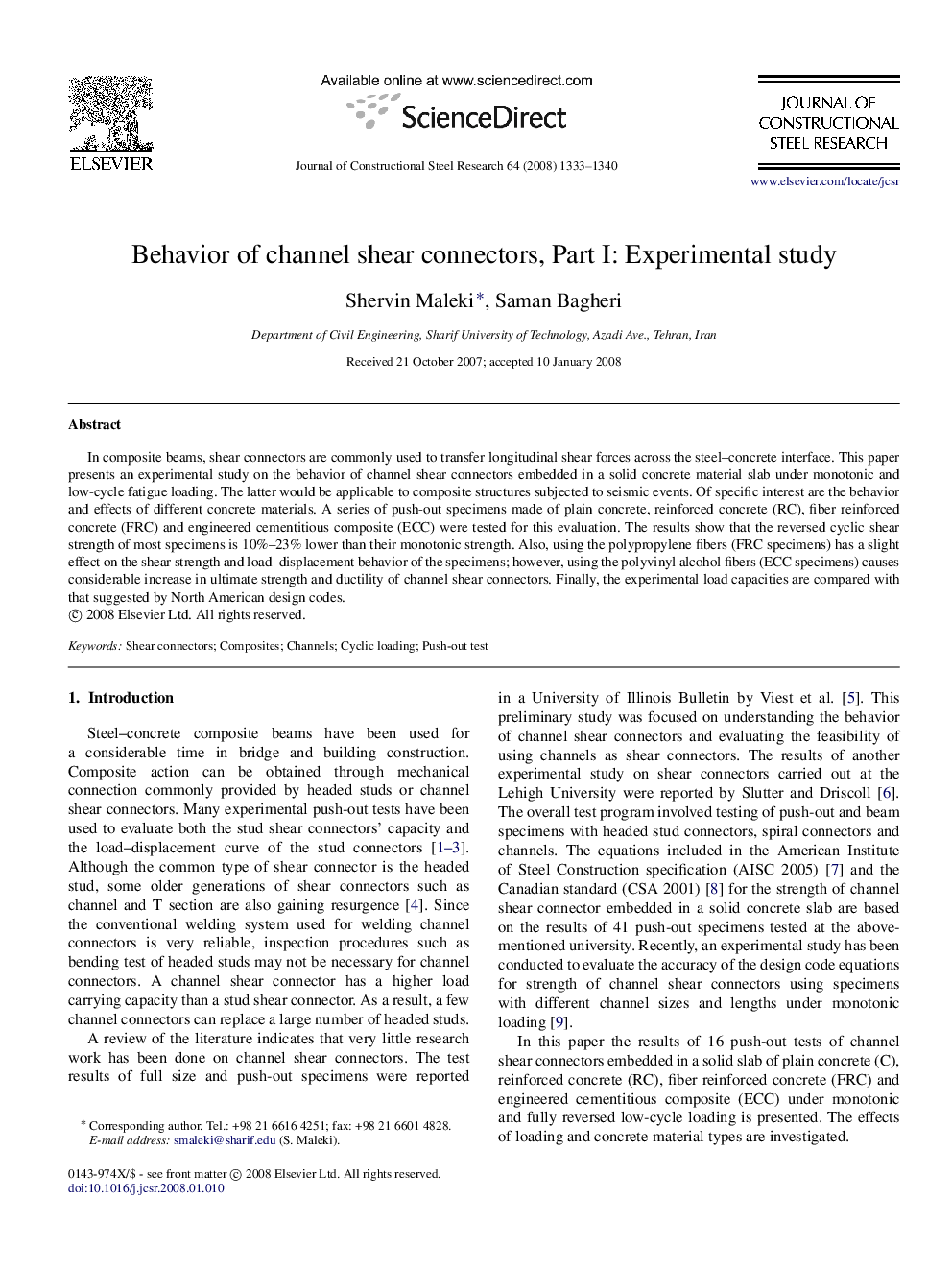| Article ID | Journal | Published Year | Pages | File Type |
|---|---|---|---|---|
| 285937 | Journal of Constructional Steel Research | 2008 | 8 Pages |
In composite beams, shear connectors are commonly used to transfer longitudinal shear forces across the steel–concrete interface. This paper presents an experimental study on the behavior of channel shear connectors embedded in a solid concrete material slab under monotonic and low-cycle fatigue loading. The latter would be applicable to composite structures subjected to seismic events. Of specific interest are the behavior and effects of different concrete materials. A series of push-out specimens made of plain concrete, reinforced concrete (RC), fiber reinforced concrete (FRC) and engineered cementitious composite (ECC) were tested for this evaluation. The results show that the reversed cyclic shear strength of most specimens is 10%–23% lower than their monotonic strength. Also, using the polypropylene fibers (FRC specimens) has a slight effect on the shear strength and load–displacement behavior of the specimens; however, using the polyvinyl alcohol fibers (ECC specimens) causes considerable increase in ultimate strength and ductility of channel shear connectors. Finally, the experimental load capacities are compared with that suggested by North American design codes.
